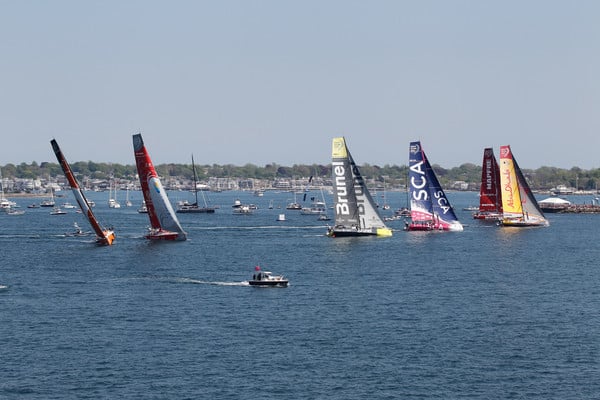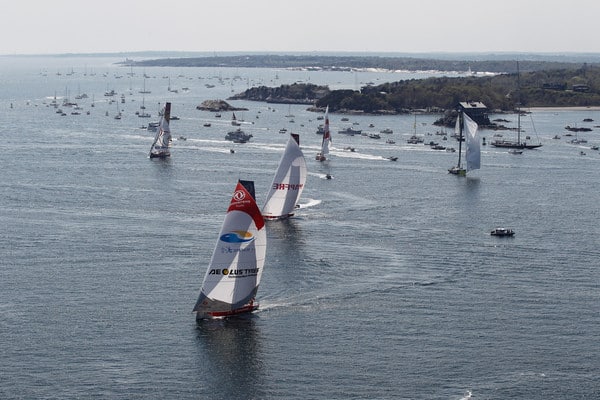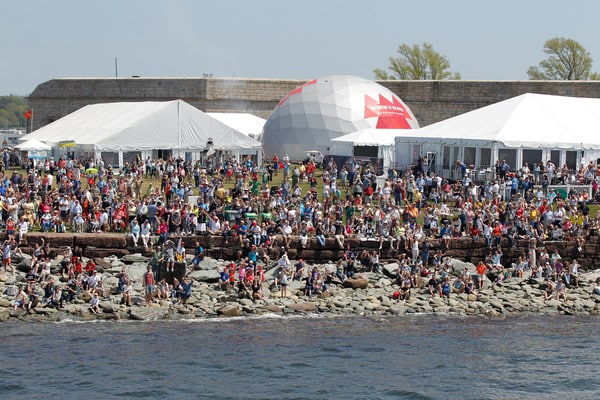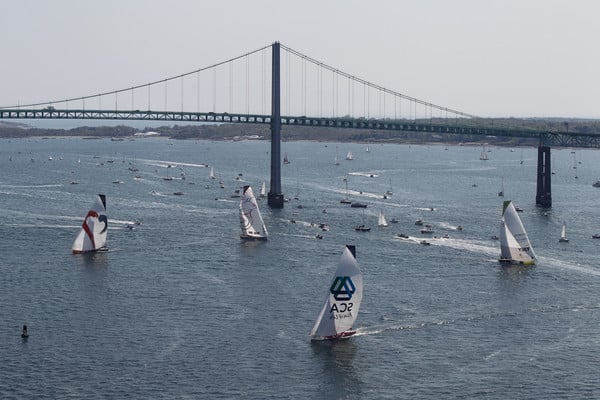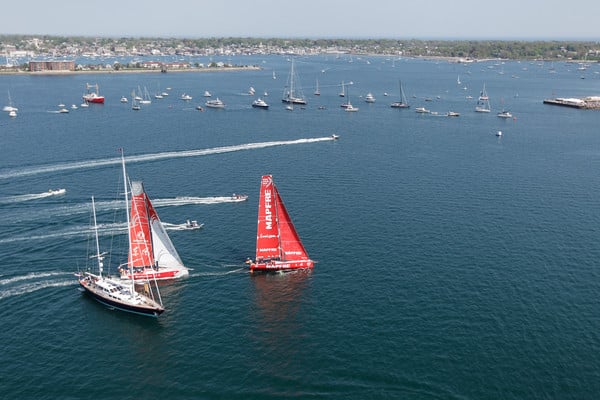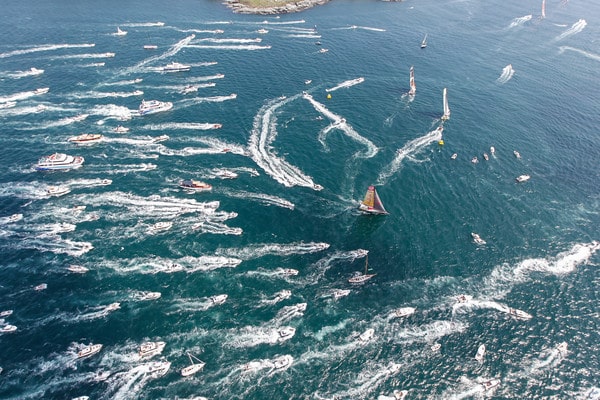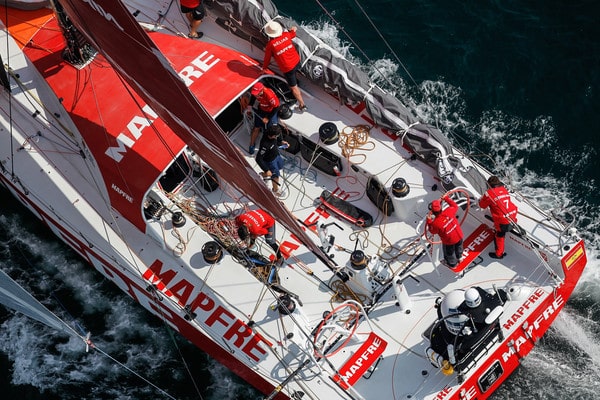Getting out of the harbor can be the hardest part of a leg start of the Volvo Ocean Race. A few laps around a cramped inshore racecourse can make all the difference in the end, even if that end is many days, many thousand miles, and multiple weather systems ahead. For Donfeng Race Team getting out of the harbor at the front of the fleet was the objective of the day.
“It will be light and dangerous for sure because you can lose the fleet in these conditions,” said Dongfeng’s skipper Charles Caudrelier before the fleet peeled away from the docks at Newport, R.I.’s Fort Adams State Park. “We just need to take care of ourselves and not make any mistakes.”
With a brilliant port-tack approach off the starting line, Dongfeng took immediate control of the race, playing the current advantages and windshifts of Narragansett Bay to build a commanding lead in the first upwind leg. Conservative sailing down the first run allowed Team Mapfre to chip away at the Frenchman’s lead, and it was shortly after the first leeward mark where Mapfre made its move into the lead thanks to a precision layline call past Rose Island, the largest natural obstacle on the racecourse.
As the two red boats matched raced out of the bay and past the iconic Castle Hill Lighthouse, the sight of Abu Dhabi ocean racing wallowing at the back of the fleet tempered the team’s fans along the shoreline. Walker has been in this position plenty of times before, however, and with the light forecast conditions ahead he at least had the assurance that the leaders would not be able to sprint away.
“The first 24 hours looks light,” said Walker during the morning’s dock-out ceremony. “Then, in the Gulf Stream, things will liven up a bit. The strategy across the Atlantic is to stay close to Dongfeng. We’ll see how we get out of the harbor, and take it from there. There’s a big fork in the road ahead and we’ll see where everyone goes from there.”
With a tactical, and likely slower-than-average leg ahead, the boats cleared Castle Hill by early afternoon under radiant blue skies, escorted by an armada of spectators boats only slightly larger than that which welcomed the fleet into Newport under darkness on May 7. As the bay turned white with wakes, one spectator onshore reminisced about the heydays of the Newport America’s Cup, concluding that the experience of the Volvo Ocean Race Newport stopover was equal to, if not better than, the Cup of yore.
Assisted by unusually warm and rain-free May weather, the “footfall” in the Fort Adams Race village exceeded expectations each day. Preliminary reports from stopover officials on the day of the Leg 7 restart surpassed 100,000, making it the race’s second-most successful port, second only to the start city of Alicante, Spain.
Even in the merchandise tent business was booming all week, leaving inventory nearly depleted and the cash registers closing out on Saturday at nearly $120,000—in one day. Local hotels were at capacity with sponsors, teams, and visitors sporting race gear: SCA magenta and Alvimedica orange being the most prevalent colors seen about town.
Race management, too, were ecstatic with the local reception, the level of knowledge, and the contribution of the stopover to Volvo’s overall footfall stat column. The positive experience led to the start of negotiations for the next edition to the race, with the City of Newport and the State of Rhode Island granted two months exclusivity for negotiations. Like overall race leader, Abu Dhabi Racing, the race is Newport’s to lose.
“I had high expectations,” said Brad Read, the stopover’s executive director who has long championed the race’s presence in his hometown. “One of the first meetings we had with the media I said I expected 100,000 people through the village and my marketing director kicked me under the table. This has blow away my expectations. It feels right and we’ve cemented it in Rhode Island. We have some negotiating for sure to make it even better than it was today.”
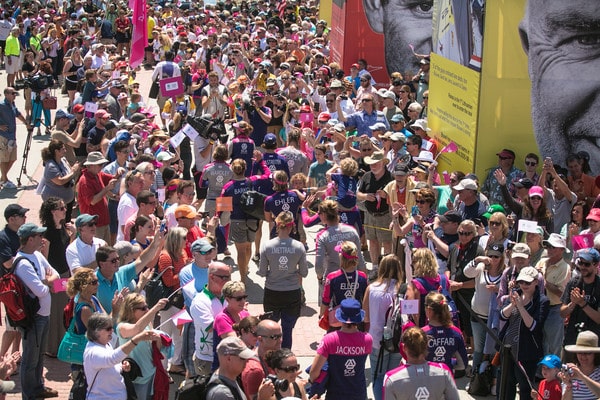
Volvo Ocean Race 2014-15 – Start Leg 7
